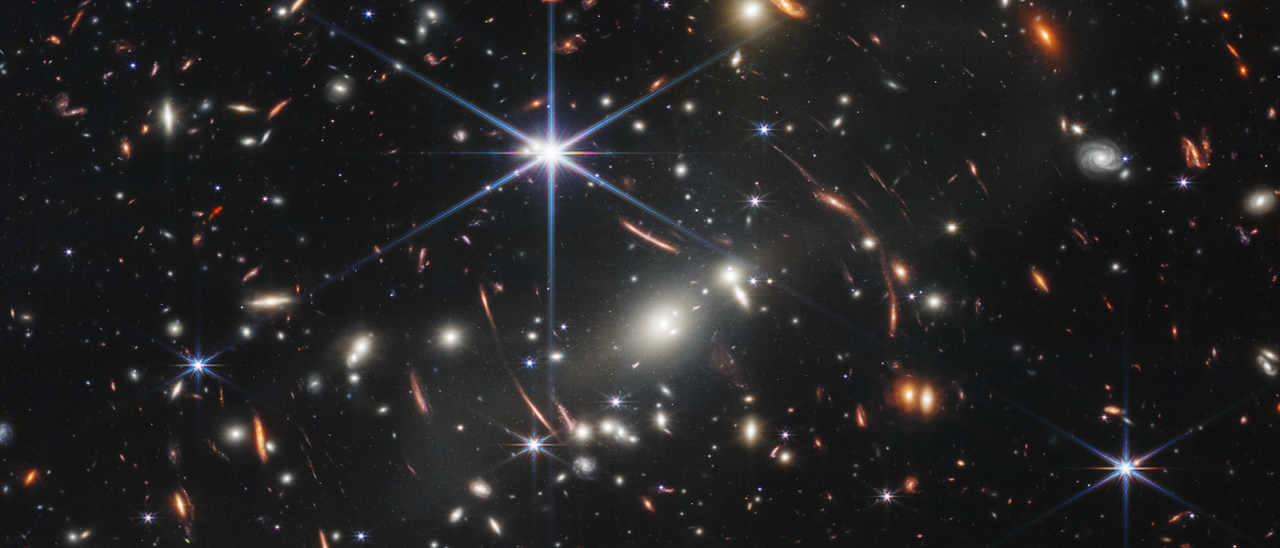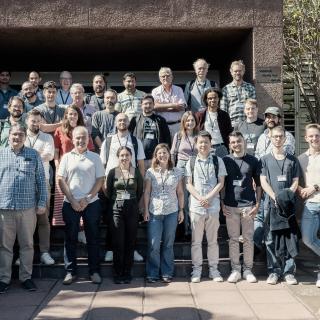An observationally based study, led by Martín López Corredoira, researcher at the Instituto de Astrofísica de Canarias (IAC) has found that certain very distant massive galaxies appear to be older than the limit set by standard cosmology. The study, published in The Astrophysical Journal, is based on the analysis of data recently obtained by the James Webb Space Telescope of galaxies that existed when the universe was only between 4% and 5% of its present age, according to the accepted standard model of cosmology. The researchers infer that the mean age of some of these galaxies would not be compatible with the accepted age of the universe, but say that it would require independent follow-up work to corroborate this conclusion.
According to the standard current model of cosmology the age of the Universe is close to 13,800 million years. Based on high resolution high sensitivity data from the James Webb Space Telescope obtained when observing galaxies with redshift close to 8, which were in existence when the universe was only 600 million years old, the research team estimate that these galaxies have, with 95% probability stellar populations with ages of between 900 and 2400 million years. This would mean that their stars would have been formed several hundred million years before the Big Bang. The ranges of the estimated ages for these galaxies was obtained assuming that the stellar population and the extinction of light by interstellar dust can be modelled using parameters obtained from nearby galaxies.
The redshift is produced by the expansion of the universe, which causes emitted wavelengths to lengthen and move towards the red end of the electromagnetic spectrum. The further away a galaxy is, the more rapidly it is moving with respect to us, and so the greater is its redshift.
Given the sequence of the formation of stars and the assembly of galaxies in the standard model, these galaxies ought to be even younger than 300 million years, on average, but those ages are excluded by this study, with a probability greater than 99.97%. Exotic, and more rapid formation of galaxies in the early stages of the universe would be a little less likely to be excluded, but is still difficult to be compatible with the data.
This study is related to what has been called the “problem of incredibly early galaxies”. According to Fulvio Melia, a researcher at the University of Arizona and one of the co-authors of the article “the discovery of well-formed galaxies at such an early stage in the history of the universe has been very disturbing for many astronomers and cosmologists, because nobody has a valid explanation for how they may have been formed. The work we are presenting makes the situation even more disconcerting for conventional cosmology, because it uses our most advanced scientific understanding to show that the stars in these galaxies are older than the universe itself, which makes no sense”.
Martin López Corredoira, the first author on the article suggests that this result could imply the need to consider non-standard cosmologies. "Even so, the conclusions of the article are the result of a number of approximations in stellar astrophysics, and models of dust extinction, so they should be treated with caution. More research is needed to confirm the possible existence of galaxies which are older than the Universe in the standard cosmological model” states Corredoira.
“If the problem is in the cosmological model, this would not necessarily mean that there was no Big Bang at the start of the Universe. We would not need to throw out everything, but we would need to rethink some of its structure”, adds López Corredoira.
According to the authors, there are alternative cosmological models, such as the so-called “Rh=ct” or “zero active mass” proposed by Fuvio Melia, which assume an expanding universe with a beginning and other characteristics similar to the standard model, but expanding at a constant rate, without the acceleration of the expansion of the universe attributed to dark energy. “With this model, the age of the Universe corresponding to the galaxies which we observe at redshift 8 would be 1500 million years, (instead of 600 million years in the standard model) which would solve the problem. It is one of the possible hypotheses which could be used to explain this result” concludes López Corredoira.
This work is based on analysis of data obtained with the James Webb Space Telescope, operated jointly by the three space agencies NASA (USA), ESA (Europe) and CSA (Canada).
Article: López Corredoira, M., Melia, F., Wei, J.-J., & Gao, C.-Y. 2024, “Age of massive galaxies at redshift 8”, The Astrophysical Journal, Volume 970, Issue 1, id. 63, 15 pp. DOI: 10.3847/1538-4357/ad4f86



